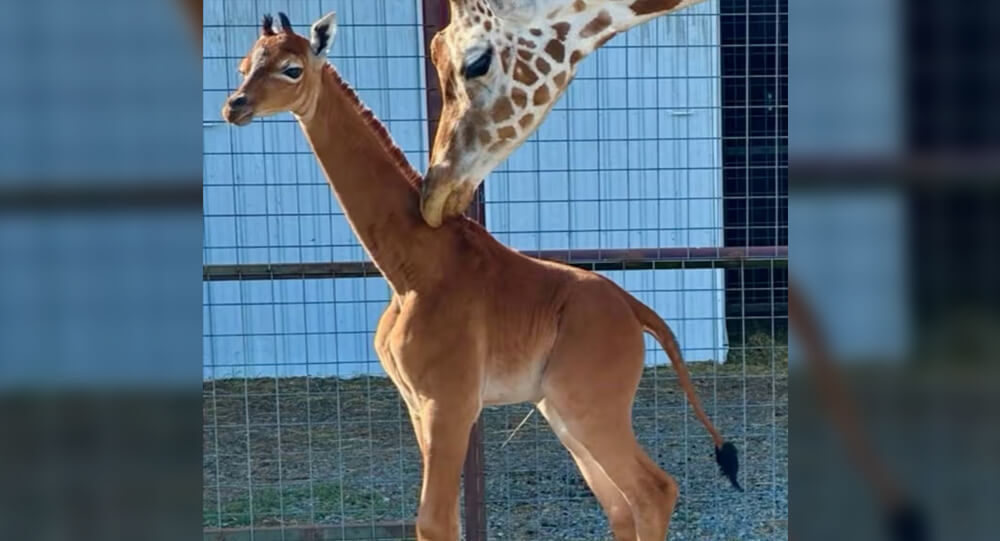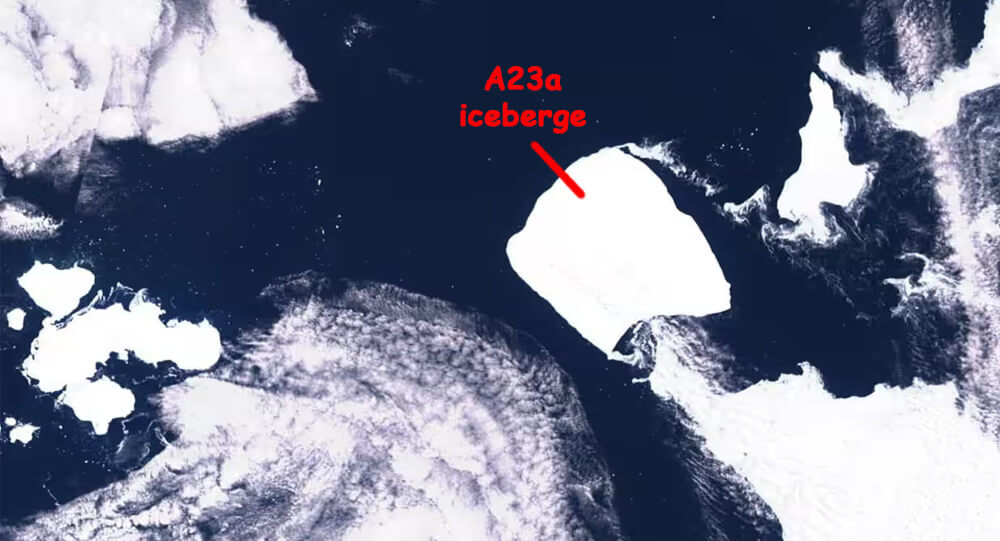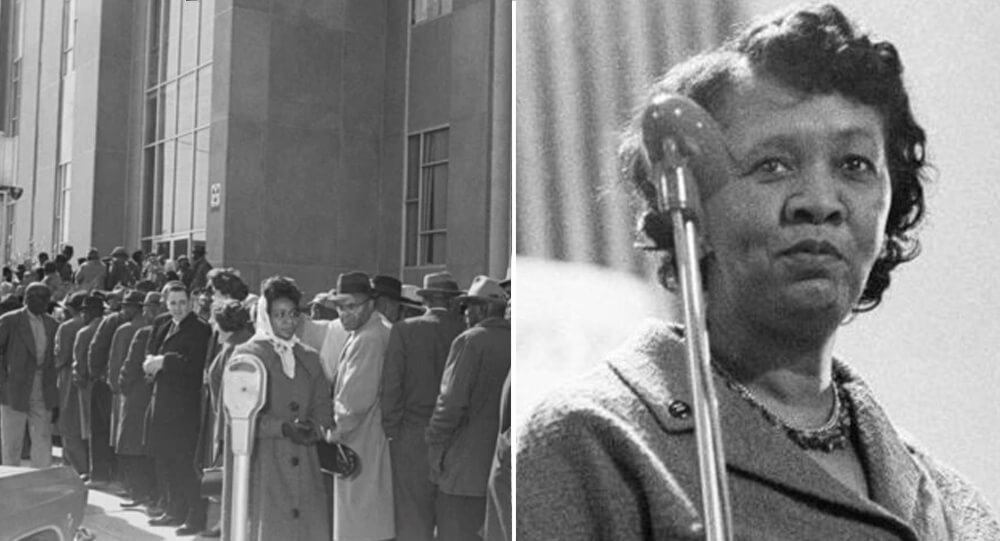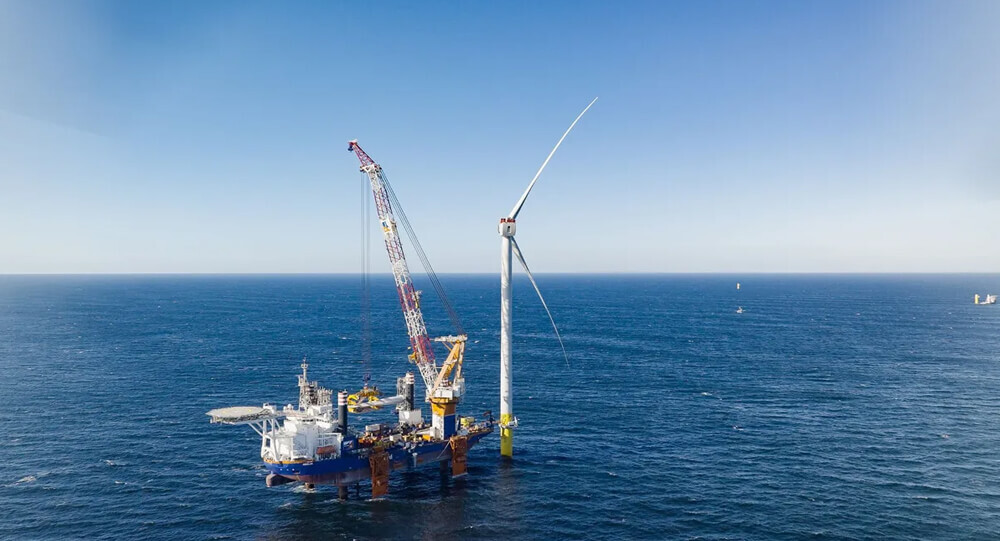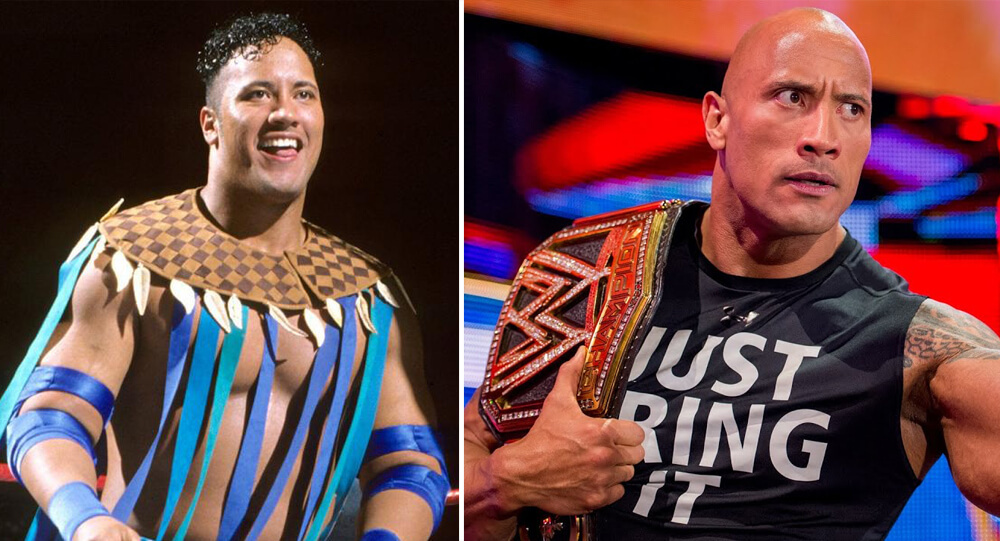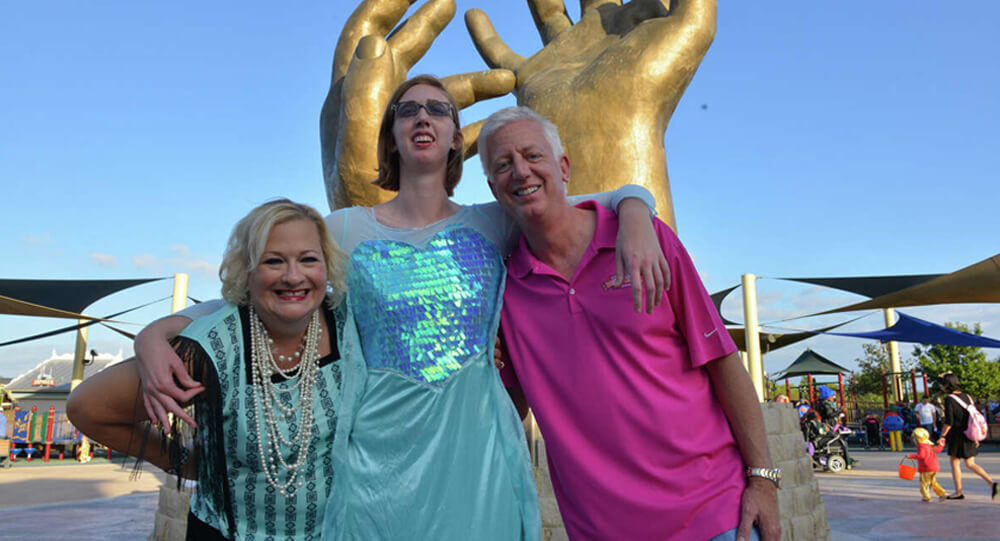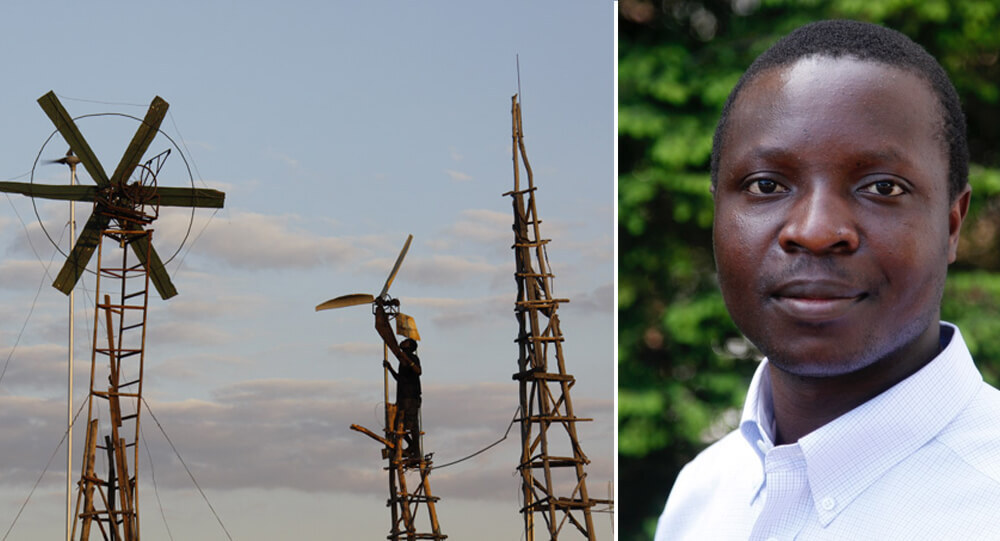
Self-taught William Kamkwamba has received praise from business leaders and climate change activists all around the world, including Al Gore.
Given that he was forced to leave school at age 14 because his family could no longer afford the $80-a-year (£50) tuition, his incredible achievements are all the more impressive.
His prospects appeared limited when he returned to his parents’ modest acreage in the Masitala community in rural Malawi.
However, this was not another story of how poverty has hampered the promise of Africa.
Defense against hunger
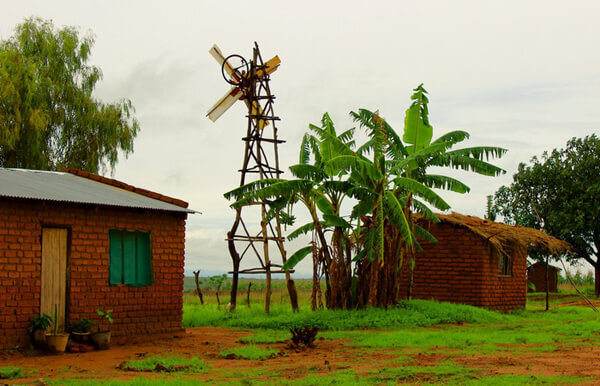
The village in which the kid lived has never had running water or electricity.
And he wasn’t going to wait for officials or humanitarian organizations to act on his behalf.
After one of Malawi’s worst droughts, which resulted in thousands of deaths and put his family in danger of starving in 2002, there was an even greater need for action.
Because he was unable to go to school, he continued his studies by accessing a nearby library.
His life was forever altered when, as a science enthusiast, he picked up a worn-out textbook and discovered a drawing of a windmill.
“I was quite excited when I discovered the windmill could create energy and pump water,” Mr. Kamkwamba told the BBC News website.
I reasoned, “That might be a defense against hunger. Perhaps I might construct one for myself.”
He labored on his prototype while working with a paraffin lamp in the nights when he wasn’t helping his family grow maize.
But his clever proposal was met with blank stares in his 200-person community.
He says that “many, including my mother, feared I was going mad.” They had never before seen a windmill.
The shock
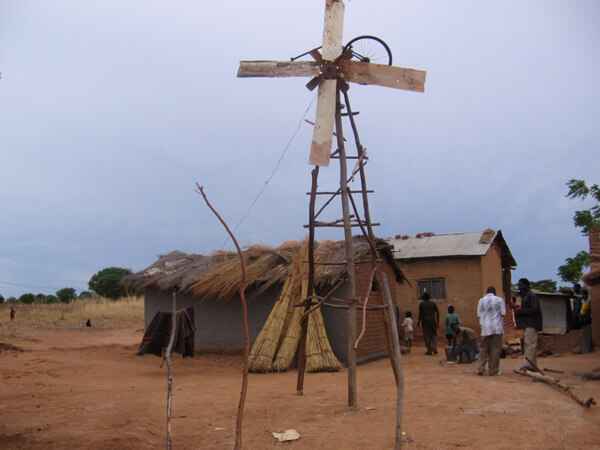
The fact that the boy spent so much time exploring trash dumps further confused the neighbors.
People mistook me for a pot smoker, he claimed. I explained to them that I was merely creating something for juju (magic), and they said, “Ah, I understand.”
Mr. Kamkwamba, who is now 22 years old, made the blades for the turbine out of plastic tubing that had been flattened by being held over a fire, together with a tractor fan blade and an old shock absorber.
In a regretful recollection of his months of laborious labour, Mr. Kamkwamba recounts, “I got a couple electric shocks climbing the [windmill].”
The completed design, a 5-m (16-ft) tall blue-gum tree wood tower that was swaying over Masitala, appeared to be little more than a vain tinkerer’s blunder.
However, when Mr. Kamkwamba climbed the windmill and attached a vehicle light bulb to the turbine, his neighbors’ amusement quickly turned to surprise.
A gathering of amazed witnesses went wild when the light sparked to life and the blades started to spin in the breeze.
The genius child’s 12-watt marvel soon began supplying power to his family’s mud-brick home.
Electric wind
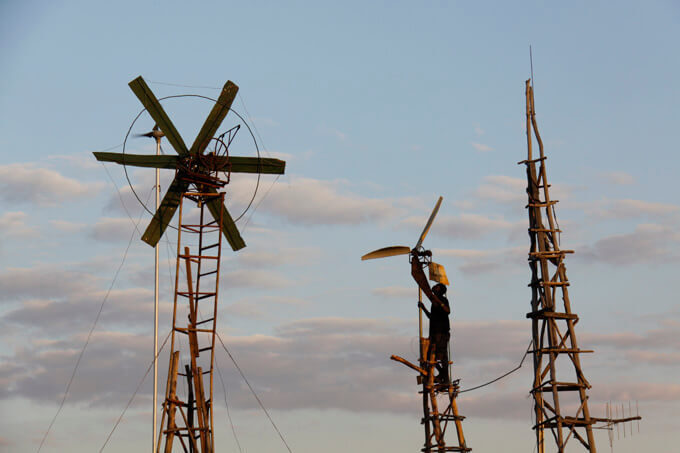
The paraffin lanterns were replaced with light bulbs, a circuit breaker fashioned from the magnets and nails from an old stereo speaker, and a light switch constructed from bicycle spokes and flip-flop rubber.
Soon, locals began standing in line to charge their phones.
When a writer from the Daily Times newspaper in Blantyre produced an article about Mr. Kamkwamba in November 2006, the story was propelled around the blogosphere.
While doing this, he added water storage tanks, constructed a mechanical pump powered by solar energy above a borehole, and provided the area around his town with its first source of potable water.
Having had the wooden base of his initial windmill eaten away by termites, he upgraded it to 48 volts and anchored it in concrete.
Then he constructed a second windmill, which he called the “Green Machine,” to drive a water pump that irrigated his family’s field.
Soon, people from all over the place came to watch at the boy prodigy’s magetsi an mphepo, or “electric wind.”
He received an invitation to the famous Technology Entertainment Design conference in Arusha, Tanzania, in the middle of 2007 as word of his renewable energy projects spread.
Cheetah generation
He remembers how thrilled he was to use a computer for the first time at the occasion.
He remarks, “I had never seen the internet, it was incredible. “I Googled windmills and discovered a lot of information.”
Standing ovations followed the native Chichewa speaker’s hesitant onstage retelling of his tale as he moved the jaded venture capitalists.
He was then featured on the Wall Street Journal’s main page in a glistening photograph.
He is currently enrolled on scholarship at Johannesburg, South Africa’s prestigious African Leadership Academy.
The world is at Mr. Kamkwamba’s feet, but he is determined to go home after his studies. He has been flown to conferences all over the world to share his life story.
With only 2% of Malawians having access to electricity, the local hero wants to finish providing power to the entire country.
I want to use everything I’ve learnt to benefit my country, he declares. I believe there is a great deal of work to be done.
Bryan Mealer, a former reporter for the Associated Press news agency, had been covering conflict in Africa for five years when he learned Mr. Kamkwamba’s tale.
The amazing event was the kind of inspiring tale that New Yorker Mealer had long wished to write about.
The Boy Who Harnessed the Wind, which has just been released in the US, was written by the author for a year with Mr. Kamkwamba.
Mealer claims that Mr. Kamkwamba is a representative of Africa’s new “cheetah generation,” a group of youthful, tech-hungry individuals who are taking charge of their own fate.
The 34-year-old Mr. Mealer says, “Spending a year with William writing this book reminded me why I fell in love with Africa in the first place.
It’s the kind of story that reminds us of our own potential and connects with every person.
How long until the film rights to the inspirational tale of overcoming adversity are bought up and William Kamkwamba, the young man who dared to dream, appears on the big screen?

Kipekee, the world's only spotless giraffe, was born at Brights Zoo
The world's only spotless giraffe was born at a zoo in the United States. The giraffe born without spots on July 31 is the only one of her kind on Earth.

Passenger with No Flying Experience Lands Plane in Florida: A Real-Life Aviation Miracle
A passenger with no flying experience landed a twin-engine plane in Florida after the pilot died mid-flight. With guidance from air traffic control, he safely touched down—a real-life aviation miracle caught on radar and radio.

Troy Leon Gregg: the death row inmate murdered the same night he escaped
In July 1980, Troy Leon Gregg escaped from Georgia State Prison the night before his execution. However, he was killed in a fight in a bar just a few hours later.

World's largest iceberg breaks off Antarctica
In 1986, the iceberg known as A23a broke away from the Antarctic coast. However, it quickly grounded in the Weddell Sea, effectively turning into an ice island.

The fearless Annie Lee Cooper
Annie Lee Cooper was fired in 1963 after attempting to register to vote. She attempted it once more in 1965, but the sheriff ordered her to leave after prodding her in the neck with a club. She then punched him, causing him to fall to the ground. She was imprisoned before ultimately registering to vote. Following the passage of the Voting Rights Act, the sheriff was ousted and subsequently imprisoned for collaborating to transport drugs, but Annie Lee Cooper lived to reach 100 years old and bears her name to this day.

New York installs first offshore wind turbine to power 70,000 homes
New York State has achieved a historic milestone in its clean energy transition by installing the first wind turbine at its first offshore wind farm, South Fork Win.

stranded hikers rescued by a life-saving iPhone feature
Stranded hikers were rescued by a life-saving iPhone feature that an awful lot of folks don't know a lot about.

LEGO Braille Bricks: Revolutionizing Braille Learning Through Play and Inclusion
go Braille Bricks were launched in 2020 to help visually impaired children learn Braille through play. Each brick features the Braille alphabet and is fully compatible with standard Lego sets, allowing sighted peers to join in, fostering inclusivity and collaboration in learning environments.

Smart girl saves her family more than 100 people in 2004 tsunami
In 2004, a 10-year-old girl saved her family and 100 other tourists from the Asian tsunami because she had learned about the giant waves in a geography lesson, it has emerged.

Before "The Rock," There Was "Rocky Maivia"
Dwayne “The Rock” Johnson’s first WWF persona was Rocky Maivia, a face (good guy). The audience rejected him due to his cheesy character, with chants of “Die, Rocky, die!”. After this, he became a heel (villain), referring to himself in the third person as “The Rock” and insulting the audience.

Australian man dies, comes back to life, and wins the lottery twice
Bill Morgan, an Australian, is a man who has beat the odds. He escaped death by surviving a horrific automobile accident and heart attack before collapsing into a coma and going on to win the lotto twice. He went from losing virtually everything to winning far more than he could have imagined.

24-year-old burglar beaten by retired boxer victim
A 24-year-old knife-wielding burglar attempted to get into the home of a 72-year-old senior in Oxford, England, in 2009, but was left battered, bruised, and pinned to the ground. Frank Corti, the elderly, turned out to be a former boxing champion.

chand baori stepwell in Rajasthan India, Ancient cooling technique
This Chand Baori stepwell in Rajasthan, India is over 1200 years old. It’s called Chand Baori. The air at the bottom of the well is 5-6 degrees cooler than at the surface, so in addition to being a water source, it was used as a community gathering place where locals could escape the heat.

Mom hears son's heartbeat 3 years after his death when she meets organ recipient
She agreed to donate her son's organs after his sudden death in June 2013 at the age of 7 months. The grieving mother was able to listen to her late son’s heart beating inside the little girl who received the organ after his death.

Missing Masterpiece Discovered in the Background of ‘Stuart Little’
In 2009, Gergely Barki, an art historian, was watching the film Stuart Little (1999) when he spotted an original long-lost painting used as a prop. Called Sleeping Lady with Black Vase, this painting was the work of Hungarian avant-garde painter Róbert Berény. The painting had been considered lost after World War II.

The actions of a 7-year-old girl protected her mother from bullets
A 7-year-old girl jumped in front of her mother to save her from a man who was attempting to kill her in 2007. She was shot six times and survived, as well as saving her mother.

Whang-od Oggay, The legendary tattoo artist from the Philippines
This is Whang-od Oggay, a 106-year-old tattoo artist from the Philippines. She is often described as the last and oldest Kalinga tattoo artist, and has been performing the traditional art of hand-tapped tattoos since the age of 15

Apple Watch saves a 78 year old man from life threatening fall
An Apple watch saved the life of a 78-year-old man from North Carolina. When the man was unconscious and collapsed on his driveway, his Apple watch quickly sent an alert to emergency services.

Morgan’s Wonderland, the world’s first ultra-accessible amusement park
Gordon Hartman was heartbroken when his special needs daughter, Morgan, was rejected by a group of children playing by the hotel poolside. He then set out to build a place where all children can play together. This led to the development of the world’s first ultra-accessible amusement park, Morgan’s Wonderland

The Man Who Kept a “Gold” Rock for Years—Only to Discover It Was a 4.6-Billion-Year-Old Meteorite Worth a Fortune
A man cherished a heavy 17-kilogram rock for years, believing it to be solid gold. The surprising twist? Experts later revealed it was a rare, 4.6-billion-year-old iron meteorite—an ancient cosmic relic worth far more than gold. Dive into the fascinating story of this celestial treasure and what makes it so valuable.

The beauty and uniqueness of Fukang Meteorite
This Fukang meteorite is around 4.5 billion years old and weighs more than 2,000 pounds. It was discovered in China in 2014 and is assumed to have formed when our solar system initially formed.

From Ocean Trash to Trendy Kicks: Adidas Sells 1 Million Eco-Friendly Shoes Made from Plastic Bottles
Adidas has sold over 1 million eco-friendly shoes made from ocean plastic. Each pair reuses the equivalent of 11 plastic bottles

Paramedic Rescues Doctor Who Saved Him 30 Years Earlier
In 1981, a doctor helped save the life of a 3.2 pounds premature baby boy. Thirty years later, the boy, who had grown up to be a firefighter-paramedic, helped in saving the same doctor from a car accident.

A three-year-old boy discovers a $4 million pendant in England
A $4 million 16th-century gold pendant was discovered in 2010 by a three-year-old boy using his father's metal detector.

Unique Dining table with a hole for your cat to peek and join you dinner.
Dinos, a Japanese internet shop, has launched a new range of cat furniture, which includes this oak table with a hole in the middle and a perch underneath. It places your cat companion in the center of the table, making your cat the main focus of your meal, as it should be, because cats are the true proprietors of “your” home.
